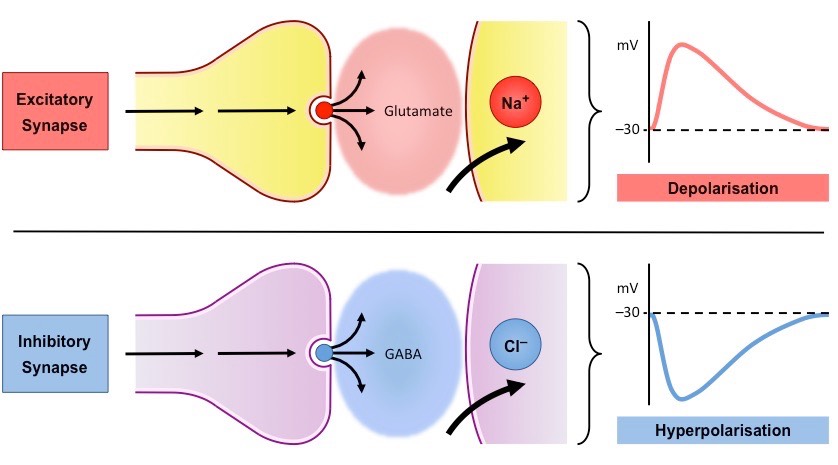![]()
Understanding:
• Some neurotransmitters excite nerve impulses in postsynaptic neurons and others inhibit them
Presynaptic neurons release neurotransmitters that diffuse into the synapse and bind receptors on postsynaptic neurons
- Some neurotransmitters generate excitatory post-synaptic potentials (EPSPs) by causing depolarisation (e.g. glutamate)
- Some neurotransmitters generate inhibitory post-synaptic potentials (IPSPs) by causing hyperpolarisation (e.g. GABA)
If the combination of excitatory and inhibitory signals reaches a threshold limit, an action potential will be generated
Excitatory vs Inhibitory Neurotransmitters

![]()
Understanding:
• Nerve impulses are initiated or inhibited in postsynaptic neurons as a result of summation of all excitatory
and inhibitory neurotransmitters received from presynaptic neurons
The combination of graded potentials (EPSPs and IPSPs) in the post-synaptic neuron is known as summation
- Cancellation occurs when excitatory and inhibitory graded potentials cancel each other out (no threshold potential reached)
- Spatial summation occurs when EPSPs are generated from multiple presynaptic neurons simultaneously to reach threshold
- Temporal summation occurs when multiple EPSPs are generated from a single presynaptic neuron in quick succession
These summative effects determine which nerve pathways are activated and hence lead to alternate decision-making processes
Types of Summation

